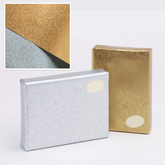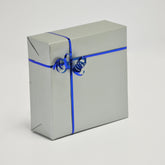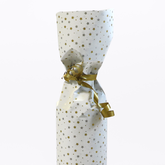Sustainable packaging: What you need to know about paper void fill

Void fill is a packaging material used to fill empty spaces in boxes or packages, preventing items from shifting and getting damaged during transit. Traditionally, plastic or petrochemical materials like Styrofoam peanuts, bubble wrap, and plastic air pillows have been used for packaging. However, these are made from non-renewable resources and are not usually biodegradable. Eco-friendly paper void fill for packaging offers a sustainable alternative that provides the same protection without the negative impact on the environment.
Understanding the advantages of sustainable packaging
Many traditional void fill materials are made from non-renewable petroleum-based resources so, their production depletes limited fossil fuel supplies. Also, they do not rot down in landfill, meaning they will sit in landfills for centuries without breaking down, posing a risk to local environment and ecosystems.
In 2021, according to the Plastic Waste Makers Index, 139 million metric tonnes of single-use plastic waste was produced globally, compared to 133 million metric tons in 2019, a worrying increase considering the heightened awareness of sustainability issues in recent years.
Considering that the global production of plastic was 390 million metric tonnes in 2021, of which 44% was for packaging, it's clear that most packaging ends up as plastic waste, with only 8.3% of the entire production coming from recycled plastic.
The scale of this environmental impact means businesses must consider sustainable alternatives like paper void fill, which is fully recyclable and biodegradable. Paper void fill used for packaging is typically made from recycled cardboard or paper. In the unlikely event it doesn't get recycled, the paper it is made from can also fully biodegrade within months in the right conditions.
How paper void fill works
Paper void fill for packaging comes in many different shapes and styles, but all types work in the same way. The product is made of shaped and folded paper that expands to fill packaging voids around products. The honeycomb structure of paper void fill makes it rigid and able to hold its form, so, it won't be crushed or flattened, providing ongoing protection for your products and transit.
Different paper void fill shapes serve various purposes. Example, curved profiles cradle fragile items, long tubes limit movement in long boxes, and interlocking cross shapes prevent all directions of shifting. When used properly, paper void fill secures items and prevents damage just as well as plastic alternatives.
The recycling process
One of the biggest advantages of sustainable packaging solutions is that they are fully recyclable. The used paper can be collected along with other paper and cardboard packaging. It then goes through a hydraulic pulping process to break it back down into a pulp, which is formed into new paper product.
Some paper void fill packaging products use up to 100% recycled content in their production. This makes paper void fill a closed-loop sustainable solution. Wastepaper gets turned into void fill, which gets recycled back into paper again with no loss of quality. This cycle can repeat indefinitely, reducing the demand for virgin tree pulp.
Why businesses should make the switch
With sustainability becoming increasingly important to consumers, using eco-friendly packaging can boost your brand image and increase sales. Switching to paper void fill also aligns your business with current industry trends, including the push toward Net Carbon Zero by 2030 in the UK. Many major retailers and brands are phasing out problem plastics and re-evaluating their packaging. By making changes now, you ensure compliance with future regulations.
Discover the advantages of Sustainable packaging with Kudos Giftwrap
If you want to integrate paper void fill or other eco-friendly packaging materials into your business, contact our team of experts at Kudos Giftwrap. We offer custom sustainable packaging solutions to help brands of all sizes become more environmentally responsible. Reach out today to learn more about the possibilities and be part of creating positive change through ethical packaging choices.






